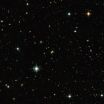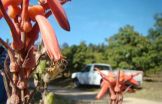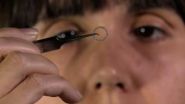(Press-News.org) Antibodies against amyloid beta (Aβ) protein deposits that are thought to play a role in Alzheimer's disease have shown some success in preventing the buildup of deposits in animals, but they have not been effective at removing preexisting deposits. Now researchers reporting in the December issue of the Cell Press journal Neuron show that a modified antibody was able to clear preexisting Aβ deposits in a mouse model of Alzheimer's disease.
"These findings have important implications for current and future development of antibodies for the treatment of Alzheimer's disease," says first author Ronald DeMattos, PhD, of Eli Lilly and Company.
One of the hallmarks of Alzheimer's disease is the accumulation between nerve cells of hard, insoluble protein fragments called amyloid plaques (or deposits). These plaques consist of Aβ fragments that are normally broken down and eliminated in the healthy brain. Emerging literature suggests that extensive plaque deposition occurs in Alzheimer's disease patients some 10 years prior to first memory complaint, and by the time of diagnosis, plaque deposition is already reported to be at or near maximal levels.
Immunotherapy for Alzheimer's disease is a promising therapeutic approach that uses antibodies to target and clear Aβ that exists as a soluble peptide or within insoluble deposits. Thus far, many investigators have utilized antibodies that can bind both soluble and insoluble forms of Aβ. These antibodies are effective in reducing amyloid deposition in mice prone to developing plaques, when given as a preventative measure; however, when given to aged mice with preexisting plaques, they have little or no effect and often cause severe side effects.
Dr. DeMattos and his colleagues hypothesized that these antibodies are unable to remove existing plaques because they become saturated with soluble Aβ when they enter the brain, and as such they are not able to bind to their intended target. To test this hypothesis, they developed a genetically engineered antibody that selectively targets the plaques.
The Lilly researchers found that their plaque-specific antibody crossed the blood-brain barrier, bound to deposited beta amyloid, and caused robust clearance of preexisting plaques in mice without causing microhemorrhage. A comparator antibody that bound to both soluble and insoluble Aβ did not effectively lower existing plaques yet caused an increase in microhemorrhage. "The data suggest that an antibody that binds to only insoluble amyloid beta is likely critical for plaque removal without the associated adverse event of microhemorrhage," says Dr. DeMattos.
The Lilly researchers believe these results are consistent with their original hypothesis. "Target engagement is fundamental for the clearance of deposited plaques, and these results highlight that approaches aimed at increasing antibody binding, or target engagement, will result in significant plaque clearance," says Dr. DeMattos.
The findings may help explain why the Alzheimer's drug bapineuzumab was no better than placebo in two recent late-stage trials in patients who had mild to moderate Alzheimer's disease. Bapineuzumab binds to both soluble and insoluble beta amyloid.
###
DeMattos et al.: "A plaque-specific antibody clears existing β-amyloid plaques in Alzheimer's disease mice."
Study shows antibody therapy clears Alzheimer's plaques in mice
Findings could aid in the development of medicines to slow or stop Alzheimer's disease progression
2012-12-05
ELSE PRESS RELEASES FROM THIS DATE:
Galaxy-wide echoes from the past
2012-12-05
Many galaxies have a giant black hole at their centre that causes the gas around it to glow. However, in the case of green bean galaxies, the entire galaxy is glowing, not just the centre. These new observations reveal the largest and brightest glowing regions ever found, thought to be powered by central black holes that were formerly very active but are now switching off.
Astronomer Mischa Schirmer of the Gemini Observatory had looked at many images of the distant Universe, searching for clusters of galaxies, but when he came across one object in an image from the Canada-France-Hawaii ...
Mayo Clinic: Less invasive surgery detects residual breast cancer in lymph nodes after chemotherapy
2012-12-05
ROCHESTER, Minn. — Most patients whose breast cancer has spread to their lymph nodes have most of the lymph nodes in their armpit area removed after chemotherapy to see if any cancer remains. A study conducted through the American College of Surgeons Oncology Group and led by Judy Boughey, M.D. a breast surgeon at Mayo Clinic shows that a less invasive procedure known as sentinel lymph node surgery successfully identified whether cancer remained in lymph nodes in 91 percent of patients with node-positive breast cancer who received chemotherapy before their surgery. In sentinel ...
Scientists pinpoint great-earthquake hot spots
2012-12-05
"We find that 87% of the 15 largest (8.6 magnitude or higher) and half of the 50 largest (8.4 magnitude or higher) earthquakes of the past century are associated with intersection regions between oceanic fracture zones and subduction zones," says Dietmar Müller, researcher at the University of Sydney in Australia and lead author of the Solid Earth paper. The connection is less striking for smaller earthquakes.
Powerful earthquakes related to these intersection regions include the destructive 2011 Tohoku-Oki and 2004 Sumatra events.
"If the association we found were ...
URI oceanography student uses crashing waves on shorelines to study Earth's interior
2012-12-05
NARRAGANSETT, R.I. – December 5, 2012 – Scientists have long used the speed of seismic waves traveling through the Earth as a means of learning about the geologic structure beneath the Earth's surface, but the seismic waves they use have typically been generated by earthquakes or man-made explosions. A University of Rhode Island graduate student is using the tiny seismic waves created by ocean waves crashing on shorelines around the world to learn how an underwater plateau was formed 122 million years ago.
"There are any number of ways to create seismic waves, but most ...
Wind speeds in southern New England declining inland, remaining steady on coast
2012-12-05
NARRAGANSETT, R.I. – December 5, 2012 – Oceanographers at the University of Rhode Island have analyzed long-term data from several anemometers in southern New England and found that average wind speeds have declined by about 15 percent at inland sites while speeds have remained steady at an offshore site.
Kelly Knorr, a graduate student at the URI Graduate School of Oceanography, and Professor John Merrill reported the results of their research today at the fall meeting of the American Geophysical Union in San Francisco.
The researchers found that average wind speeds ...
Gladstone scientists: 'ApoE is an ideal target for halting progression of Alzheimer's disease'
2012-12-05
SAN FRANCISCO, CA—December 5, 2012—Despite researchers' best efforts, no drug exists that can slow, halt or reverse the onslaught of Alzheimer's disease. A progressive and fatal neurodegenerative disorder, Alzheimer's has stolen the memories and livelihoods of millions—leaving patients and their families struggling to cope with the disease's devastating consequences. But today, scientists at the Gladstone Institutes propose a new research avenue that has the potential to change all that.
In the latest issue of the journal Neuron, available today online, Gladstone Investigators ...
Africa's Homo sapiens were the first techies
2012-12-05
The search for the origin of modern human behaviour and technological advancement among our ancestors in southern Africa some 70 000 years ago, has taken a step closer to firmly establishing Africa, and especially South Africa, as the primary centre for the early development of human behaviour.
A new research paper by renowned Wits University archaeologist, Prof. Christopher Henshilwood, is the first detailed summary of the time periods he and a group of international researchers have been studying in South Africa: namely the Still Bay techno-traditions (c. 75 000 – 70 ...
Discovery of 100 million-year-old regions of DNA shows short cut to crop science advances
2012-12-05
Scientists have discovered 100 million-year-old regions in the DNA of several plant species which could hold secrets about how specific genes are turned 'on' or 'off'.
The findings, which are hoped will accelerate the pace of research into crop science and food security, are detailed by University of Warwick researchers in the journal The Plant Cell.
By running a computational analysis of the genomes of the papaya, poplar, Arabidopsis and grape species, scientists have uncovered hundreds of conserved non-coding sequences which are found in the DNA of all four species.
These ...
Small patches of native plants help boost pollination services in large farms
2012-12-05
A combined team of scientists from Europe and South Africa (Luísa G. Carvalheiro (University of Leeds, UK & Naturalis Biodiversity Research Centre, Netherlands), Colleen Seymour and Ruan Veldtman (SANBI, South Africa) and Sue Nicolson (University of Pretoria)) have discovered that pollinator services of large agriculture fields can be enhanced with a simple cost-effective measure, that involves the creation of small patches of native plants within fruit orchards.
"Mango farmers in South Africa are aware of the pollination limitation of this crop and invest a substantial ...
New technique to deliver stem cell therapy may help damaged eyes regain their sight
2012-12-05
In research published in the journal Acta Biomaterialia, researchers from the University of Sheffield describe a new method for producing membranes to help in the grafting of stem cells onto the eye, mimicking structural features of the eye itself. The technology has been designed to treat damage to the cornea, the transparent layer on the front of the eye, which is one of the major causes of blindness in the world.
Using a combination of techniques known as microstereolithography and electrospinning, the researchers are able to make a disc of biodegradable material which ...
LAST 30 PRESS RELEASES:
Learning about public consensus on climate change does little to boost people’s support for action, study shows
Sylvester Cancer Tip Sheet for January 2026
The Global Ocean Ship-Based Hydrographic Investigations Program (GO-SHIP) receives the Ocean Observing Team Award
Elva Escobar Briones selected for The Oceanography Society Mentoring Award
Why a life-threatening sedative is being prescribed more often for seniors
Findings suggest that certain medications for Type 2 diabetes reduce risk of dementia
UC Riverside scientists win 2025 Buchalter Cosmology Prize
SETI Institute opens call for nominations for the 2026 Tarter Award
Novel theranostic model shows curative potential for gastric and pancreatic tumors
How beige fat keeps blood pressure in check
Fossils reveal ‘latitudinal traps’ that increased extinction risk for marine species
Review: The opportunities and risks of AI in mental health research and care
New map reveals features of Antarctic’s ice-covered landscape
Beige fat promotes healthy vascular function and blood pressure in mice
Chronic low-dose pesticide exposure reduces the life span of wild lake fish, China-based study shows
Tiny earthquakes reveal hidden faults under Northern California
Long-term pesticide exposure accelerates aging and shortens lifespan in fish
Professor Tae-Woo Lee's research group develops groundbreaking perovskite display technology demonstrating the highest efficiency and industry-level operational lifetime
The “broker” family helps tidy up the cell
Ecology: Mummified cheetahs discovery gives hope for species’ Arabic reintroduction
Researchers survey the ADHD coaching boom
Air pollution and cardiac remodeling and function in patients with breast cancer
Risk of suicide in patients with traumatic injuries
Post–intensive care syndrome
The lifesaving potential of opioid abatement funds
The Frontiers of Knowledge Award goes to Allan MacDonald and Pablo Jarillo-Herrero for their discovery of the “magic angle” enabling science to transform and control the behavior of new materials
Discovery reveals how keto diet can prevent seizures when drugs fail
JMIR Publications and Sikt announce pilot flat-fee unlimited open access partnership
Finding new cell markers to track the most aggressive breast cancer in blood
A new, cleaner way to make this common fertilizer
[Press-News.org] Study shows antibody therapy clears Alzheimer's plaques in miceFindings could aid in the development of medicines to slow or stop Alzheimer's disease progression




